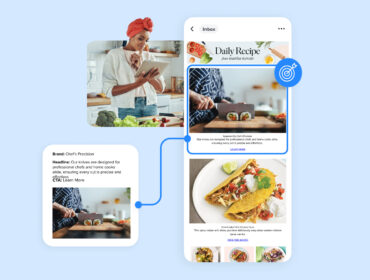Apple’s Mail Privacy Protection (MPP): What it means for direct-sold deals
Of course, it’s not enough that Google has decided to do away with third-party cookies; Apple has also changed the terrain of the digital landscape with its Mail Privacy Protection (MPP).
So what is MPP, and how does it affect publisher direct-sold deals? According to Apple, when using the Mail app, MPP “stops senders from using invisible pixels to collect information about the user. The new feature helps users prevent senders from knowing when they open an email and masks their IP address so it can’t be linked to other online activity or used to determine their location.”

With MPP, emails coming through the Apple Mail client will appear opened creating an inflated email open rate, rendering this data unreliable. Of course, this presents an issue for publishers looking to monetize their email newsletters with direct-sold deals as inflated open rates also apply to impressions — but only how those impression-based metrics (like CPM, CTR) are calculated and not the impact of those impressions on revenue.
Unfortunately, MPP also affects your ability to offer certain types of targeting when it comes to your direct-sold campaigns. With MPP, targeting subscribers at the zip code level is not possible in an MPP-enabled Mail app environment.
A focus on engagement beyond open rates
It’s more important than ever that publishers look to and understand audience engagement at a deeper level, well beyond open rates. This will be an important factor for capitalizing on audiences and content in 2022 and beyond.
It may be beneficial to segment your email list between Apple Mail users and non-Apple Mail users. This approach can help you establish a control group that sheds light on email performance within the rest of the market, outside of Apple’s foothold. With this insight, you create a proxy to understand email performance across the rest of your audiences. With those lists, you can then take a look at engagement metrics that go beyond email opens, like:
- Email clicks. Take a look at the links that your audiences are checking out. What type of content are they engaging with? Is there an affinity for a particular kind of content amongst specific audiences? These kinds of questions can help publishers uncover insights that can curate more refined audience segments.
- Web Sessions. Consider how traffic from your newsletter is contributing to engagement on your website. It’s not always a given that your email subscribers will click through to your website. But just because they haven’t clicked doesn’t preclude them from being active engagers of your web content. Compare your web activity with your email lists as another input to identifying engaged readers versus dormant emails.
Adapting your direct-sold deals in light of MPP
Collecting data that provides more insight into your customers’ interests, needs, and desires is critical to monetizing your digital properties in light of MPP. The more data you have that can help your advertisers with improved targeting to deliver premium digital experiences the more valuable your partnership (and your properties) will be. Equipped with this data, you can structure direct-sold deals that are immune to the changes brought on by Big Tech.

You can collect customer insights by engaging your subscribers and asking them for information that can be helpful to your business, like in the form of a survey. Brands have been particularly successful in using surveys to provide recommendations for products and services. Take a look at how ThirdLove uses quizzes to learn more about their customers and their needs. Remember, however, that it is critical to outline why sharing this type of information will benefit them as subscribers. This will help you build a trusting relationship with your customers that puts them at the center of the digital experience.


